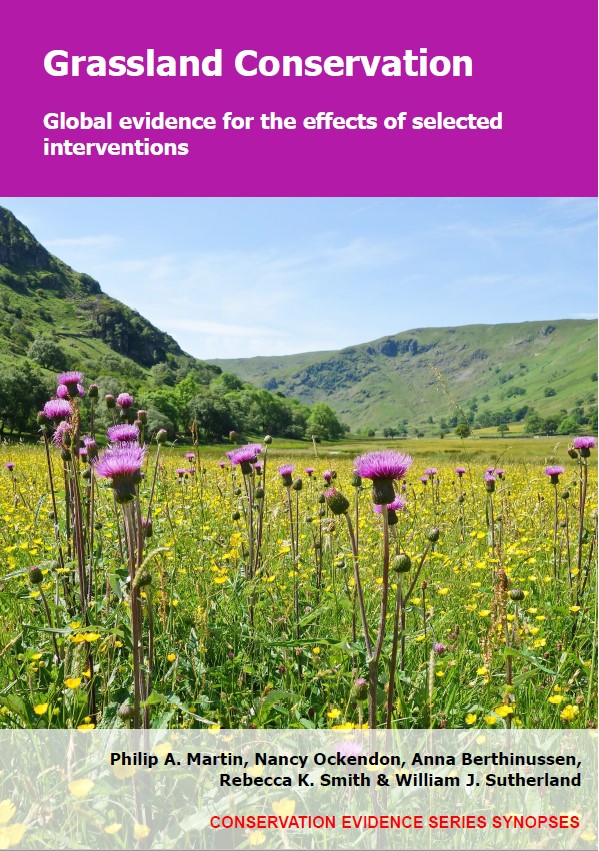Sow seeds in part of site
-
Overall effectiveness category Evidence not assessed
-
Number of studies: 3
View assessment score
Hide assessment score
How is the evidence assessed?
-
Effectiveness
not assessed -
Certainty
not assessed -
Harms
not assessed
Study locations
Supporting evidence from individual studies
A study in 1998–2003 at two reclaimed mine sites in southeast Montana, USA (Reever Morghan et al. 2005) found that two of three native plant species sown within plots spread to unsown areas at each site. After 3–4 years, 113–146 narrow-leaved purple cornflower Echinacea angustifolia patches and 6–14 white sagebrush Artemisia ludoviciana patches were recorded in unsown areas of the sites at average distances of 50–67 m and 32–46 m from the nearest sown plot, respectively. After four years, large Indian breadroot Pediomelum esculentum plants were not recorded in unsown areas at either site. In autumn 1998, eighteen 9-m2 plots (64 m apart) were tilled at each of the two sites. In February 1999, purple cornflower (2,133 seeds/m2), white sagebrush (161 seeds/m2) or Indian breadroot (161 seeds/m2) was sown in the plots (number of plots for each not reported). Both sites were strip-mined in 1980–1983 and reseeded with 12 native grass species and five native forbs in 1990–1993. One of the two sites was grazed on rotation during the study. In 2002 and 2003, new patches (individual plants or plant clusters) of each of the three plant species were mapped within unsown areas of each site.
Study and other actions testedA replicated, randomized, paired, controlled study in 1999–2009 in semi-dry grassland in the Czech Republic (Mitchley et al. 2012) found that sowing seeds in strips within each site did not alter sown grass and herb cover or species richness compared to unsown areas. Cover of sown grass species (0–20% vs 0–9%) and herb species (0–8% vs 0–6%) did not differ significantly between areas where seeds were sown in strips and areas where no seeds were sown. The same pattern was true for grass species richness (seeded strips: 0–2.5 species/plot; unseeded: 0–1.9 species/plot) and herb species richness (seeded strips: 0–3.5 species/plot; unseeded: 0–3.5 species/plot). The plant community composition of areas sown with seeds in strips was also more similar to areas where no seeds were sown than that of ancient meadows. In eight 55 × 20 m plots, a 2.5-m central strip was sown with a seed mixture containing seven grass species and 20 herb species at a rate of 2 g/m2, while four plots were not sown with seeds. In June in 2000–2004 and 2009, ten 1.5 x 1.5 m quadrats were placed in each plot and all species present and their cover recorded.
Study and other actions testedA replicated study in 2006–2011 in nine arable fields in Iowa, USA (Hirsh et al. 2013) found that after sowing seeds in strips within the fields, the total number of plant species and the number and cover of native plant species increased with time. From 1–4 years after strips were seeded, there were increases in the total number of plant species (from 38 to 55 species), and the number (from 25 to 39 species) and cover (from 38 to 69%) of native plant species. The cultivated part of fields with planted strips had similar numbers (11–15 species) and cover (5–7%) of weeds to fields without strips (13 species, 4% cover). Twelve arable fields of 0.5–3.2 ha were studied. In nine fields, one to three strips, comprising 10–20% of the field area, were tilled and seeded with 31 species of locally-collected tallgrass prairie seeds in July 2007, and mowed annually. Three fields were left as entire crop fields cultivated with a corn-soybean rotation, and treated with synthetic fertiliser and glyphosate. Plant cover and species were recorded in twelve 0.5-m2 quadrats within the planted strips and 12 quadrats within the crop area of each field each summer from 2008–2011.
Study and other actions tested
Where has this evidence come from?
List of journals searched by synopsis
All the journals searched for all synopses
This Action forms part of the Action Synopsis:
Grassland Conservation
Grassland Conservation - Published 2021
Grassland Synopsis





)_2023.JPG)














